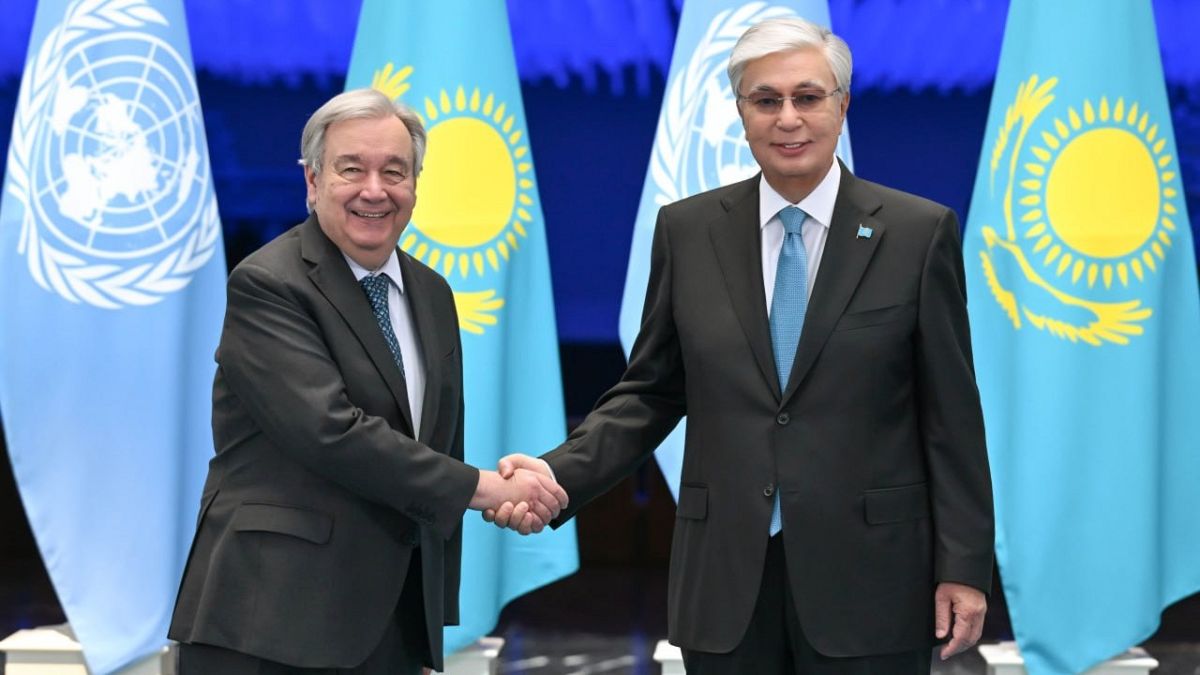

In a world that is as dynamic and interconnected as ever, recent developments across different regions showcase the ever-changing face of our planet’s climate and the strides being made towards sustainable growth. As we reflect on these events, there is a profound sense of both the challenges we confront and the opportunities that lie ahead.
In Central Asia, a positive step forward has been made with the establishment of a new regional hub by the United Nations in Kazakhstan. This initiative was inaugurated following a meeting between the UN Secretary-General and Kazakhstan’s president in Almaty. Designed to strengthen cooperative efforts within the region, this center aims to promote sustainable development not only in Central Asia but also to extend its supportive reach towards Afghanistan. By fostering dialogue and collaboration, this hub is set to become a pivotal point of concerted regional efforts, offering a beacon of hope for sustainable progress and stability in these parts.
Shifting our gaze to Russia, the natural world demonstrated its colossal power as the Krasheninnikov volcano on Kamchatka Peninsula erupted, awakening after centuries of dormancy. This geological marvel was preceded by a significant 8.8-magnitude earthquake in the area. As the volcanic ash rises into the sky, it serves as a reminder of the latent forces beneath Earth’s crust and the delicate balance of our planet’s environmental dynamics. Such natural events offer both awe and an opportunity to study and understand the geological activity that has shaped, and continues to shape, our planet.
Meanwhile, Australia’s New South Wales witnessed an unexpected sight as towns were blanketed in snow, marking one of the heaviest snowfalls in the region since the mid-1980s. According to the Bureau of Meteorology, some areas have reported snowfall reaching up to 40 centimeters. Such rare occurrences of snow in typically warmer locales remind us of the diverse climate patterns prevailing globally and highlight the variations that are part of the natural fluctuations in weather systems.
Further adding to the global climate narrative is the continuing heatwave sweltering through Japan and South Korea. Both nations have experienced unprecedented temperature records, with Japan’s city of Tamba reaching a record high temperature of 41.2°C—surpassing a previous record set in 2020. In South Korea’s Seoul, residents have encountered nights that have not dipped below 25°C for an astounding 22 consecutive evenings. These extremes echo the uptick in global temperatures, a concern highlighted by repeated surpassings of historical temperature averages over recent years. However, it also emphasizes the pressing need for adaptive strategies that address the multifaceted impacts of ongoing climate changes.
Amidst these diverse climatic performances and geological surprises, the collective efforts towards enhancing sustainable practices and cooperation shine as a testament to human resilience and foresight. From the strategic implementations in Kazakhstan to the scientific investigations surrounding volcanic activity, as well as the adaptability in regions experiencing unusual weather, the global community continues to build pathways to a sustainable and harmonious future.
By understanding and embracing the variable moods of our planet, coupled with a commitment to sustainable development, there lies a hopeful horizon. A horizon where each incremental advancement and every cooperative endeavor serve as a stepping stone toward a more balanced and sustainable existence on Earth.
Source: {link}
